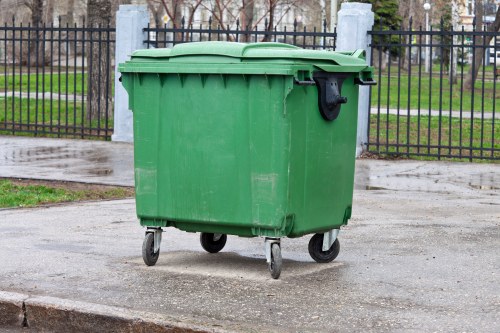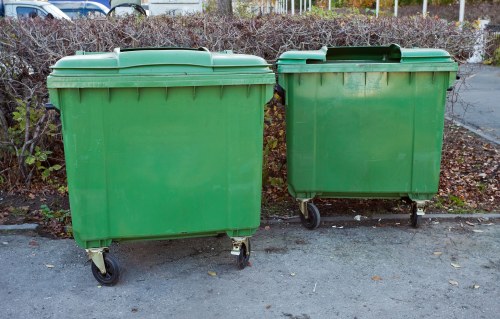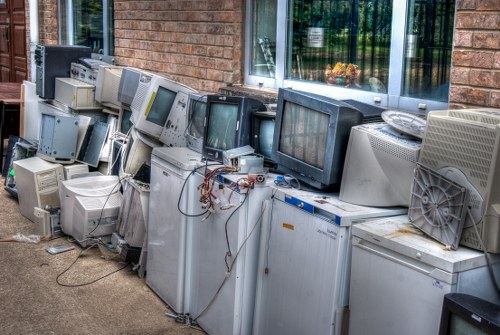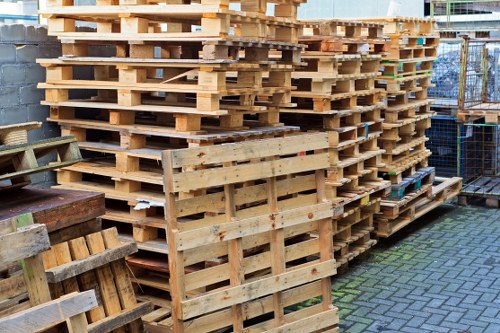Furniture Disposal in House Clearances

When it comes to house clearances, one of the most challenging tasks homeowners face is furniture disposal. Whether you're downsizing, relocating, or simply decluttering, responsibly getting rid of unwanted furniture is crucial. This process not only helps in creating a more organized living space but also ensures that old furniture is handled in an environmentally friendly manner.
Effective furniture disposal involves several steps, from assessing what you no longer need to choosing the right method for disposal. Understanding your options can save you time, money, and reduce your environmental footprint.
In this comprehensive guide, we'll explore various strategies for furniture disposal, tips for maximizing value, and eco-friendly practices that make the process smoother and more efficient.

Why Proper Furniture Disposal Matters
Proper furniture disposal is important for several reasons. Firstly, it helps in maintaining a clutter-free home, which can significantly improve your living environment and mental well-being. Secondly, responsible disposal ensures that furniture is either reused, recycled, or disposed of in a way that minimizes environmental impact.
Improper disposal, such as abandoning furniture on the street or sending it to a landfill, can lead to environmental degradation and waste of valuable resources. Additionally, many municipalities have regulations regarding large item disposal, and failing to comply can result in fines or penalties.
Moreover, choosing the right disposal method can sometimes provide financial benefits. For instance, selling or donating usable furniture can offset moving costs or provide tax deductions.

Methods of Furniture Disposal
1. Selling Your Furniture
If your furniture is still in good condition, selling it can be a lucrative option. You can use online marketplaces like eBay, Craigslist, or Facebook Marketplace to reach a wide audience. Additionally, local consignment shops or flea markets are great places to sell gently used furniture.
- Pros: Generate extra income, reduce waste, and give your furniture a second life.
- Cons: Requires time and effort to list, photograph, and communicate with buyers.
2. Donating to Charities
Donating your furniture to charitable organizations is a generous way to support those in need while also aiding the environment. Many charities offer free pick-up services, making the process convenient for donors.
- Pros: Tax deductions, quick disposal, and helping a good cause.
- Cons: Limited to furniture in usable condition.
3. Recycling
Recycling is an eco-friendly option that ensures your old furniture is broken down and its materials are reused. Many recycling centers accept wood, metal, and plastic components of furniture.
- Pros: Reduces landfill waste, conserves natural resources, and supports sustainability.
- Cons: Not all furniture materials are recyclable, and it may require disassembly.

Eco-Friendly Furniture Disposal Practices
Upcycling and Repurposing
Upcycling involves transforming old furniture into something new and useful. This practice not only extends the life of the furniture but also adds a unique touch to your home decor.
- Examples: Turning old wooden pallets into bookshelves or repurposing an old dresser as a bathroom vanity.
- Benefits: Creative expression, environmental sustainability, and cost-effectiveness.
Hiring Professional Disposal Services
Professional furniture disposal services offer a hassle-free solution for clearing out unwanted items. These services handle the heavy lifting, transportation, and proper disposal or recycling of your furniture.
- Pros: Saves time and effort, ensures compliance with local regulations, and often provides eco-friendly disposal options.
- Cons: Can be more expensive than DIY methods.
Community Donation Centers
Local community centers, shelters, and non-profit organizations often accept furniture donations. This not only helps those in need but also fosters a sense of community and support.
- Pros: Immediate impact, tax benefits, and promoting community welfare.
- Cons: Limited acceptance based on furniture condition and organization's needs.

Tips for Efficient Furniture Disposal
Assess and Categorize Your Furniture
Before deciding on the disposal method, assess the condition of each furniture piece. Categorize them into items that can be sold, donated, recycled, or need to be disposed of as trash.
- Step 1: Inspect each piece for damage, wear, and functionality.
- Step 2: Determine if it’s worth selling or donating based on its condition.
- Step 3: Choose recycling or disposal for items beyond repair.
Plan Ahead and Schedule Accordingly
Having a clear plan can streamline the disposal process. Schedule pick-ups with donation centers or recycling services in advance to avoid last-minute hassles.
- Tip: Create a timeline for each disposal method to ensure timely removal.
- Tip: Use checklists to keep track of items and their disposal status.
Consider the Environmental Impact
Always consider the environmental implications of your disposal choices. Opt for methods that minimize waste and promote sustainability.
- Choice: Prioritize recycling and donating over landfill disposal.
- Choice: Support companies and services that adhere to eco-friendly practices.
Maximize Value Through Maintenance
Properly maintaining your furniture before disposal can increase its resale or donation value. Clean, repair, and refurbish items to make them more appealing to buyers or recipients.
- Action: Sand down rough surfaces and apply fresh paint or stain.
- Action: Fix any broken parts or replace damaged hardware.
Legal and Regulatory Considerations
Understanding local regulations regarding furniture disposal is essential to avoid legal issues. Different municipalities have specific rules about what can be disposed of and how.
- Check: Local waste management guidelines for large item disposal.
- Ensure: Compliance with recycling and donation requirements.
- Avoid: Unauthorized dumping, which can result in fines.
Conclusion
Furniture disposal is a critical aspect of house clearances that requires careful planning and consideration. By exploring various methods such as selling, donating, recycling, and upcycling, you can efficiently manage unwanted furniture while contributing positively to the environment.
Remember to assess each item's condition, choose eco-friendly disposal practices, and adhere to local regulations to ensure a smooth and responsible clearance process. With the right approach, you can transform the daunting task of furniture disposal into an opportunity for renewal and sustainability.
If you're ready to clear out your space and dispose of furniture responsibly, contact us today to learn more about our professional house clearance and furniture disposal services.